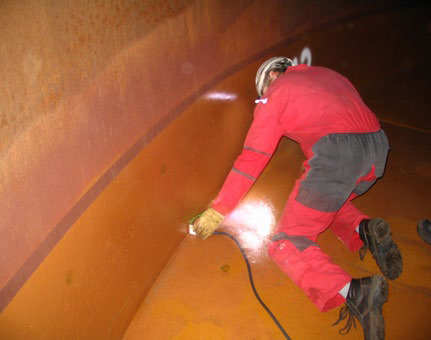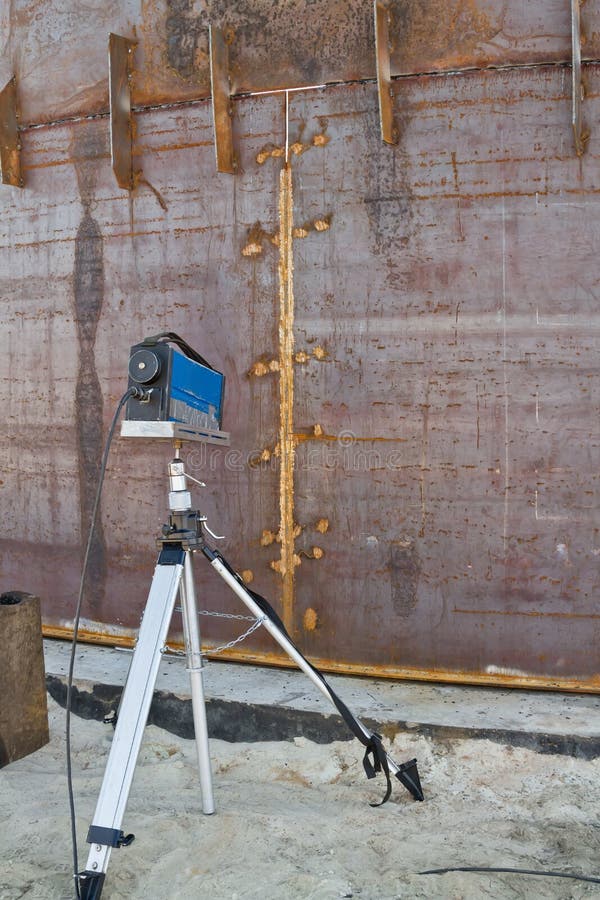Finest Practices for Effective Tank Welding Inspection Processes
Finest Practices for Effective Tank Welding Inspection Processes
Blog Article
A Detailed Introduction of Container Welding Evaluation Specifications and Methodologies for Improved Weld Quality and Performance
The significance of welding inspection criteria in the manufacturing of tanks can not be overstated, as they serve as the backbone for ensuring weld honesty and functional dependability. Different evaluation techniques, consisting of aesthetic assessments and advanced non-destructive testing methods, are crucial in identifying possible flaws that could compromise performance.
Importance of Welding Evaluation Criteria

Welding evaluation criteria encompass a variety of criteria, consisting of product specs, welding treatments, and certifications of personnel entailed in the welding process. By enforcing these standards, organizations can methodically identify and correct possible defects, therefore reducing the probability of expensive repairs or tragic failures. Additionally, extensive examination practices cultivate a culture of accountability and precision, motivating welders to preserve high degrees of craftsmanship.

Common Welding Assessment Strategies


Ultrasonic Examining (UT) is an additional widespread method, using high-frequency audio waves to discover interior defects that may not be noticeable externally. This method is specifically efficient for identifying gaps or incorporations within the weld metal. Magnetic Fragment Testing (MT) is likewise widely used, specifically for ferromagnetic materials, as it reveals surface area and near-surface flaws with the application of magnetic fields and ferrous bits.
In Addition, Liquid Penetrant Screening (PT) spots surface-breaking defects by using a penetrant to the weld and after that making use of a programmer to extract the penetrant. Each of these techniques adds to a comprehensive examination method, guaranteeing that welds fulfill the rigid quality requirements required in storage tank construction.
Governing Specifications and Conformity
Governing requirements and conformity are necessary components in making sure the security and integrity of welded frameworks in tank building and construction - Tank Welding Inspection. These standards offer to develop minimum demands for product homes, welding treatments, and inspection methods, therefore reducing the danger of architectural failures and improving general efficiency
Key organizations, such as the American Culture of Mechanical Designers (ASME) and the American Welding Society (AWS), offer standards that are extensively adopted in the market. Conformity with these criteria not only guarantees adherence to finest techniques but also satisfies lawful and legal commitments, safeguarding the rate of interests of stakeholders.
Regulative bodies usually mandate adherence to specific codes, such as ASME Code Section IX for welding certifications and API 650 for bonded containers. These codes lay out requirements for welding techniques, certifications of workers, and testing techniques to confirm weld honesty.
Normal audits and examinations are critical to maintaining compliance, as they help identify discrepancies from established standards. Non-compliance can result in significant penalties, job hold-ups, and security dangers. Therefore, a durable understanding of regulative requirements and a commitment to compliance are critical in achieving top quality and resilient welded tank frameworks.
Non-Destructive Examining Approaches
Exactly how can the read this article stability of welded structures be ensured without triggering damage? Non-destructive testing (NDT) approaches supply a durable option, enabling inspectors to examine weld quality without endangering the product - Tank Welding Inspection. Amongst one of the most usual NDT strategies are ultrasonic screening (UT), radiographic testing (RT), magnetic particle testing (MT), and color penetrant testing (PT)
Ultrasonic testing employs high-frequency acoustic waves to discover inner imperfections and characterize material homes. It supplies accurate measurements and is especially reliable for thick materials. Radiographic screening includes passing X-rays or gamma rays through the weld, creating photos that reveal architectural flaws such as cracks or gaps. This technique is important for assessing the honesty of complicated welds.
Magnetic fragment screening is fit for ferromagnetic materials, where electromagnetic fields expose my website surface area and near-surface gaps. Color penetrant testing uses a fluid dye to highlight surface-breaking problems, making it an effective technique for non-porous materials.
Each of these NDT methods has distinctive advantages, permitting thorough evaluations customized to specific materials and welding procedures. By implementing these methods, sectors can ensure the dependability and safety and security of bonded structures, eventually improving total performance.
Enhancing Weld High Quality With Assessment
Reliable inspection plays a vital duty in enhancing weld quality, functioning as a crucial checkpoint in the manufacture procedure. By identifying potential problems early, evaluations minimize the threat of compromised structural integrity and guarantee compliance with market requirements. Utilizing a mix of aesthetic exams, non-destructive screening (NDT) approaches, and mechanical analyses, assessors can detect issues such as porosity, cracks, and incomplete fusion.
Executing a robust evaluation protocol not only boosts the general high quality of welds however likewise promotes a culture of accountability among welders and makers. Normal training and qualification of examination workers make sure that they are furnished with the needed skills to recognize and address possible troubles successfully. This proactive approach decreases rework and linked expenses, eventually contributing to predict performance.
Moreover, comprehensive documentation of examination searchings for offers valuable understandings into reoccuring problems, helping with continual enhancement in welding practices. By leveraging innovative innovations, such as automated ultrasonic testing or electronic radiography, weld quality can be boosted with much more precise analyses. Finally, a rigorous assessment process is indispensable in accomplishing top quality welds, ensuring security, reliability, and long life in tank manufacture.
Conclusion
In verdict, the application of strenuous container welding assessment standards and techniques is crucial for ensuring weld stability and efficiency. By using a mix of visual assessments, non-destructive screening approaches, and adherence to regulative criteria, organizations can efficiently determine and minimize possible issues. Fostering a society of responsibility amongst welders additionally improves the high quality find of welding procedures. Eventually, these practices add to reduced structural failures, lower repair service expenses, and enhanced functional effectiveness within the sector.
Report this page